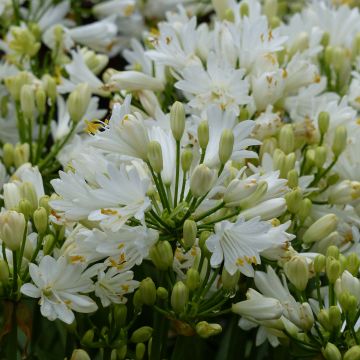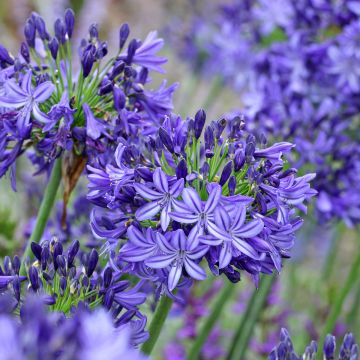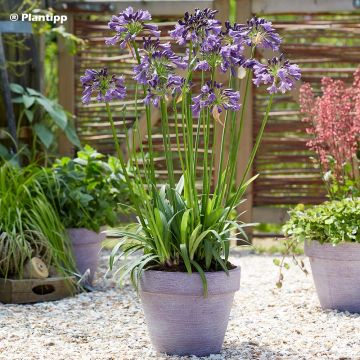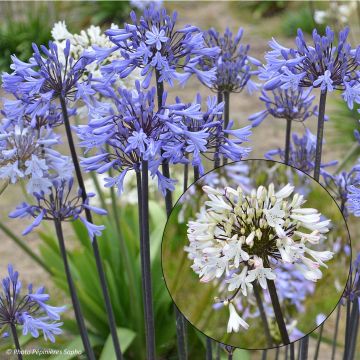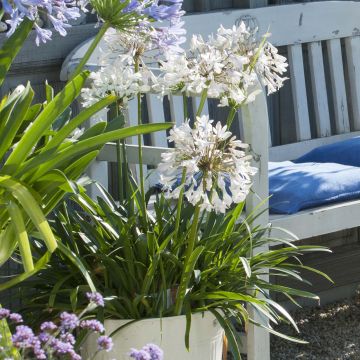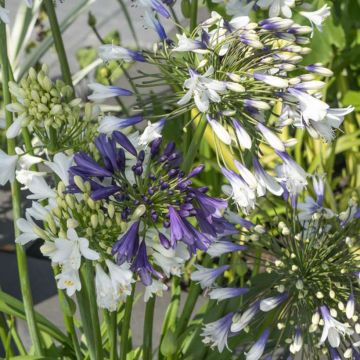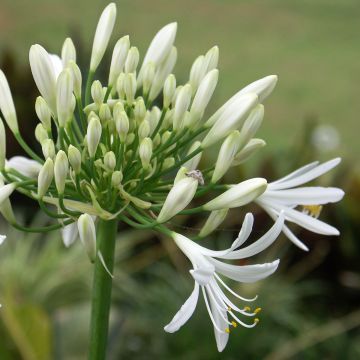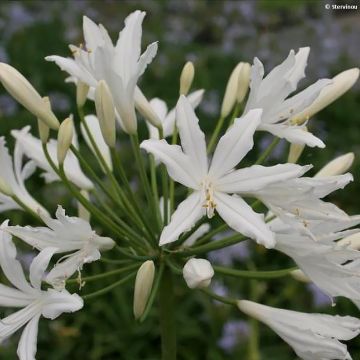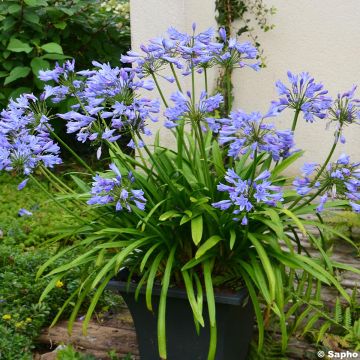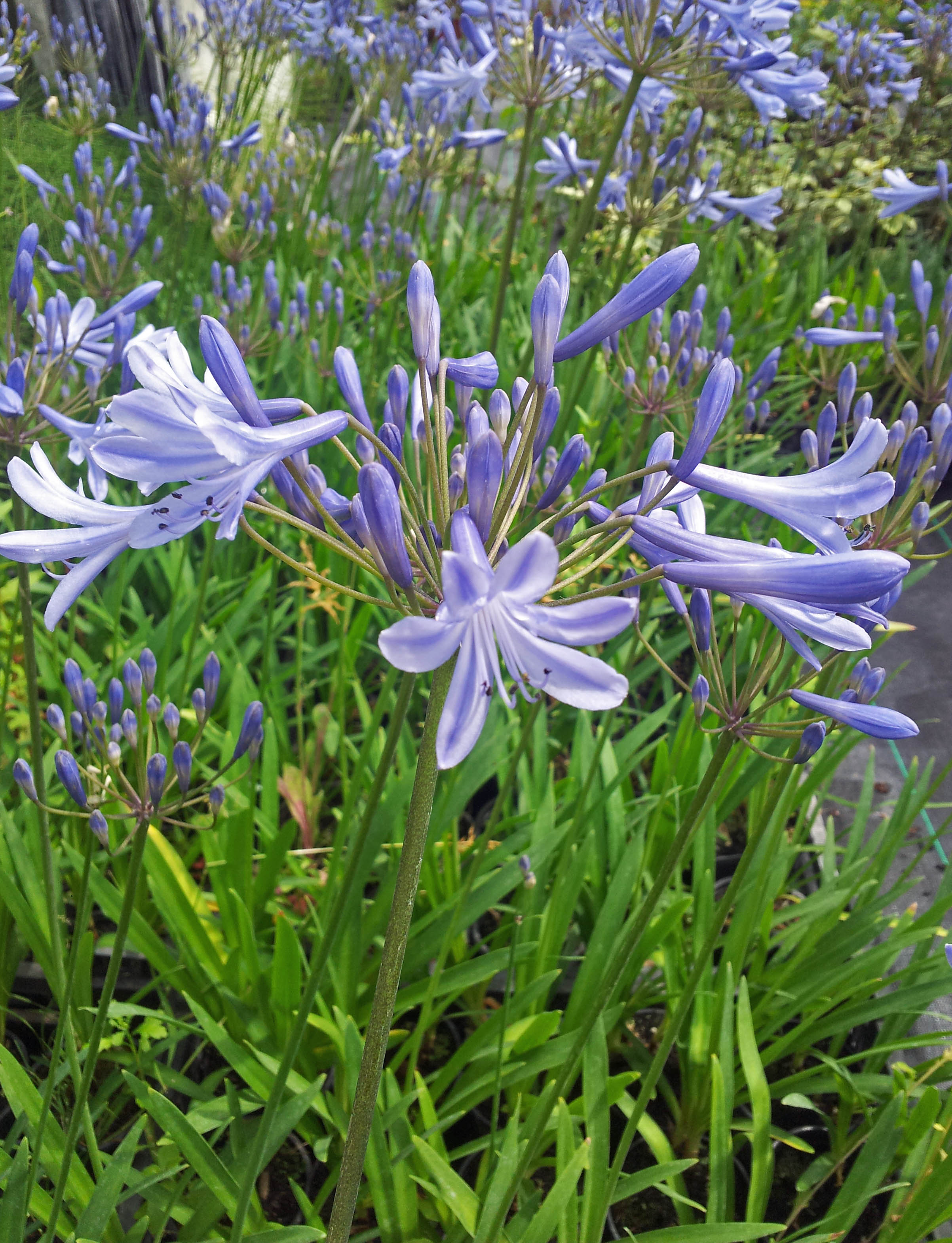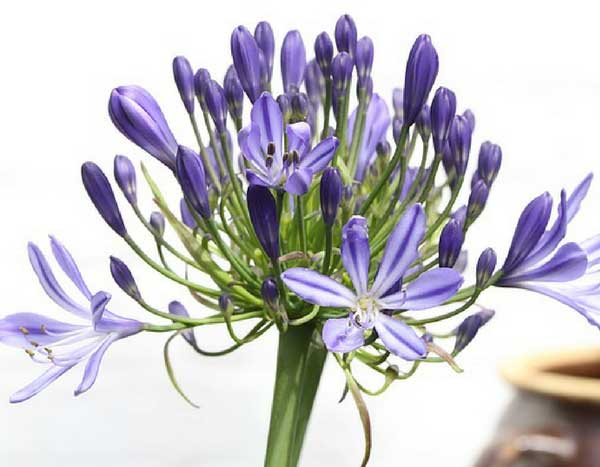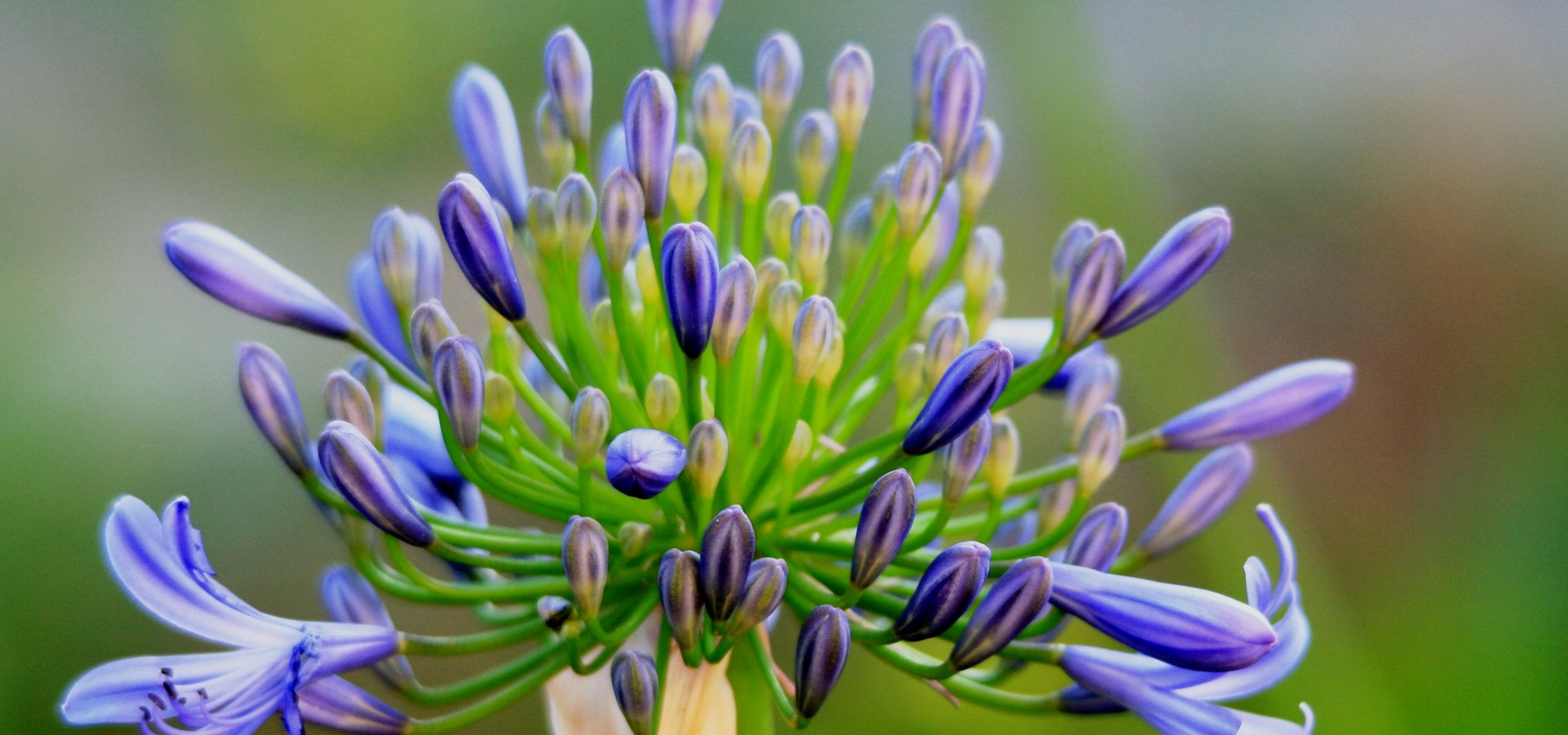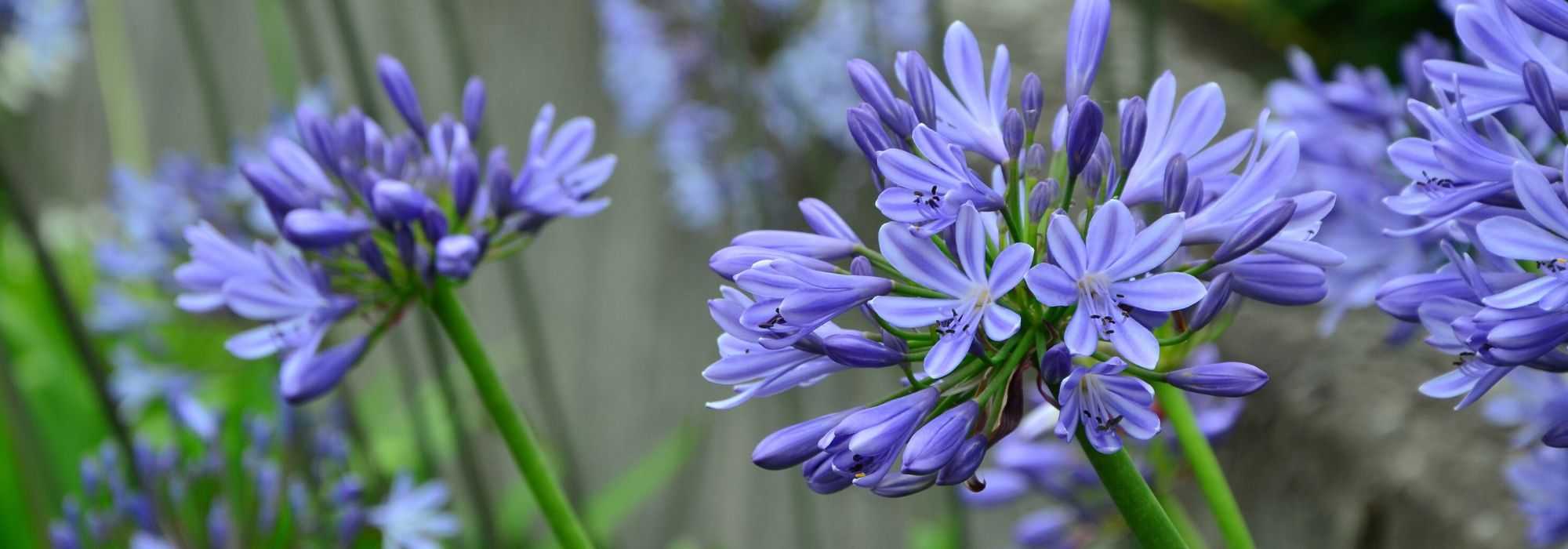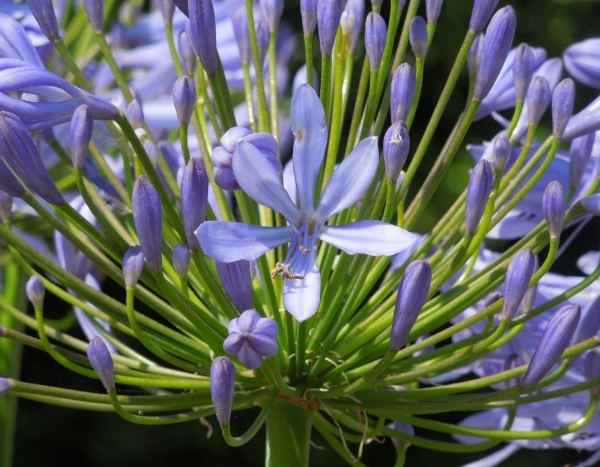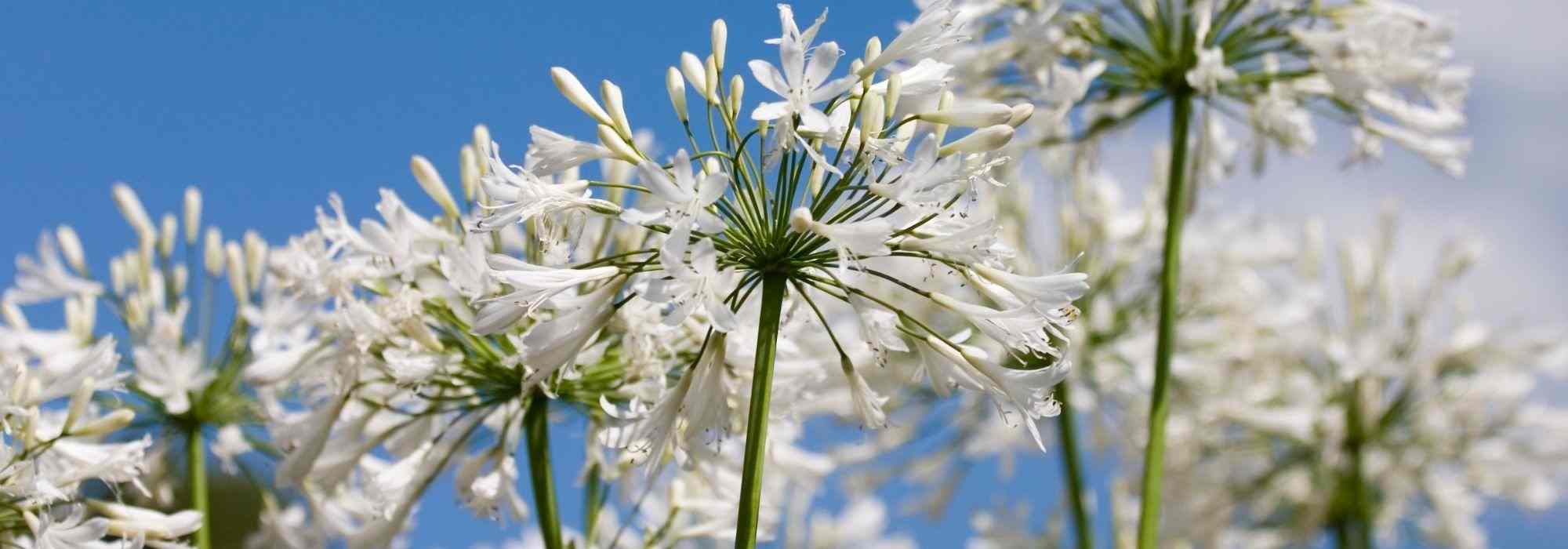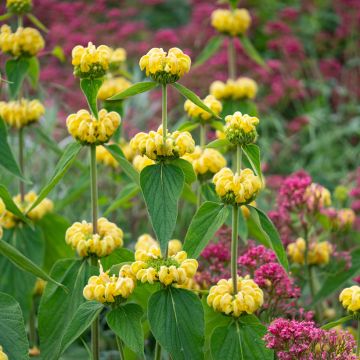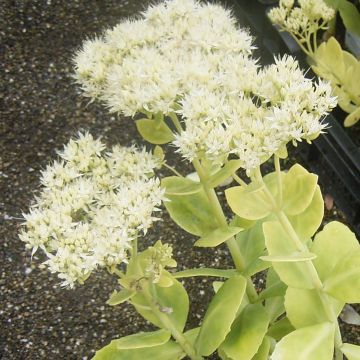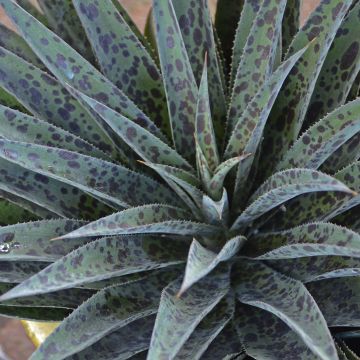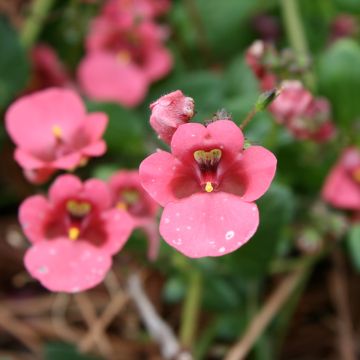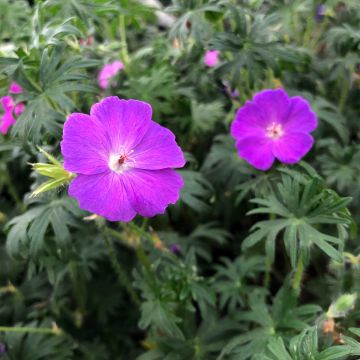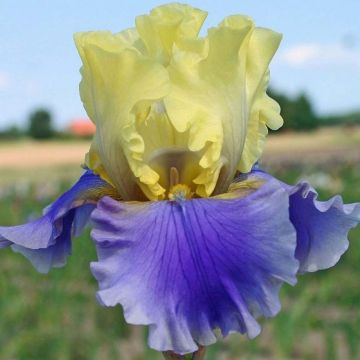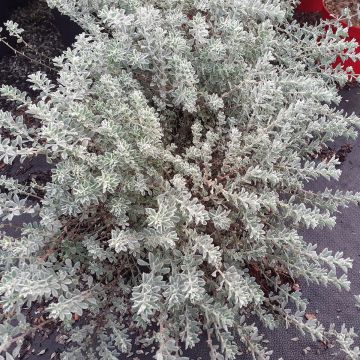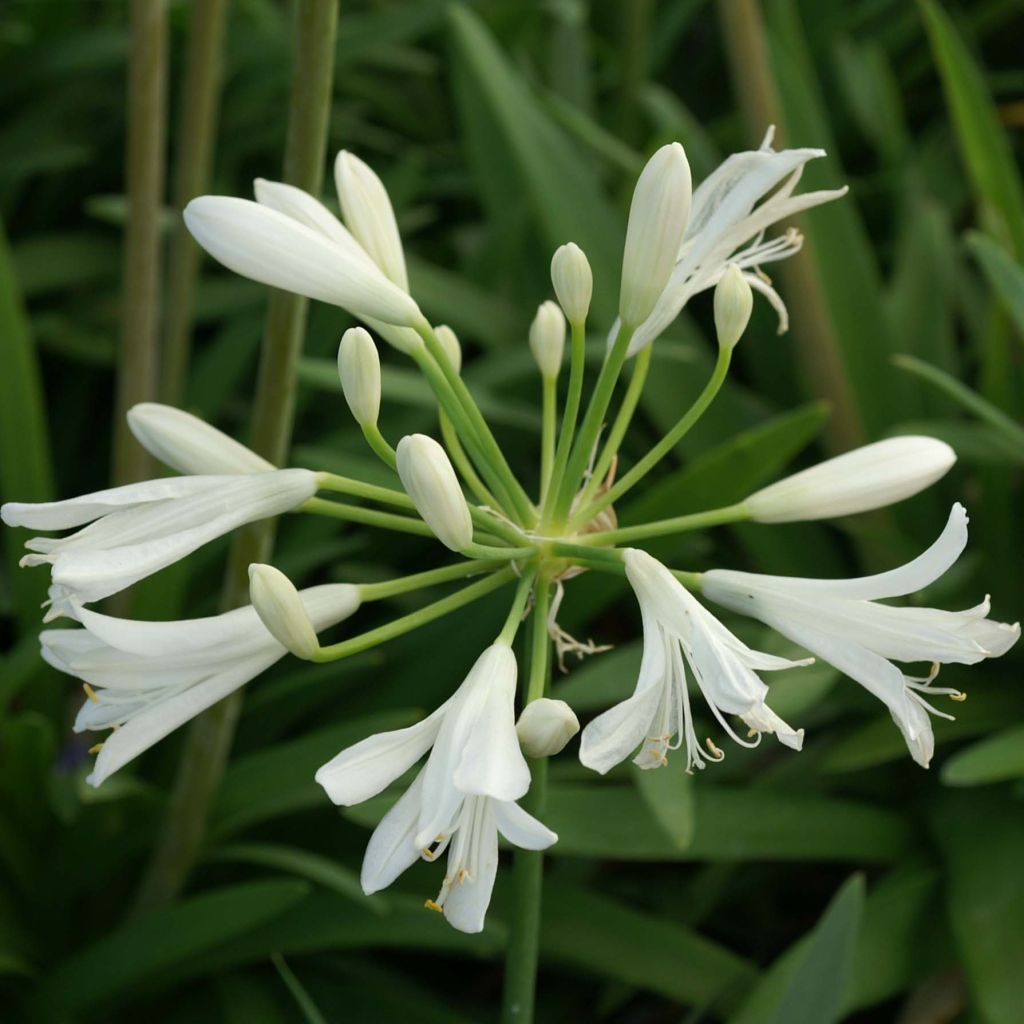

Agapanthe Thumbelina - Agapanthus
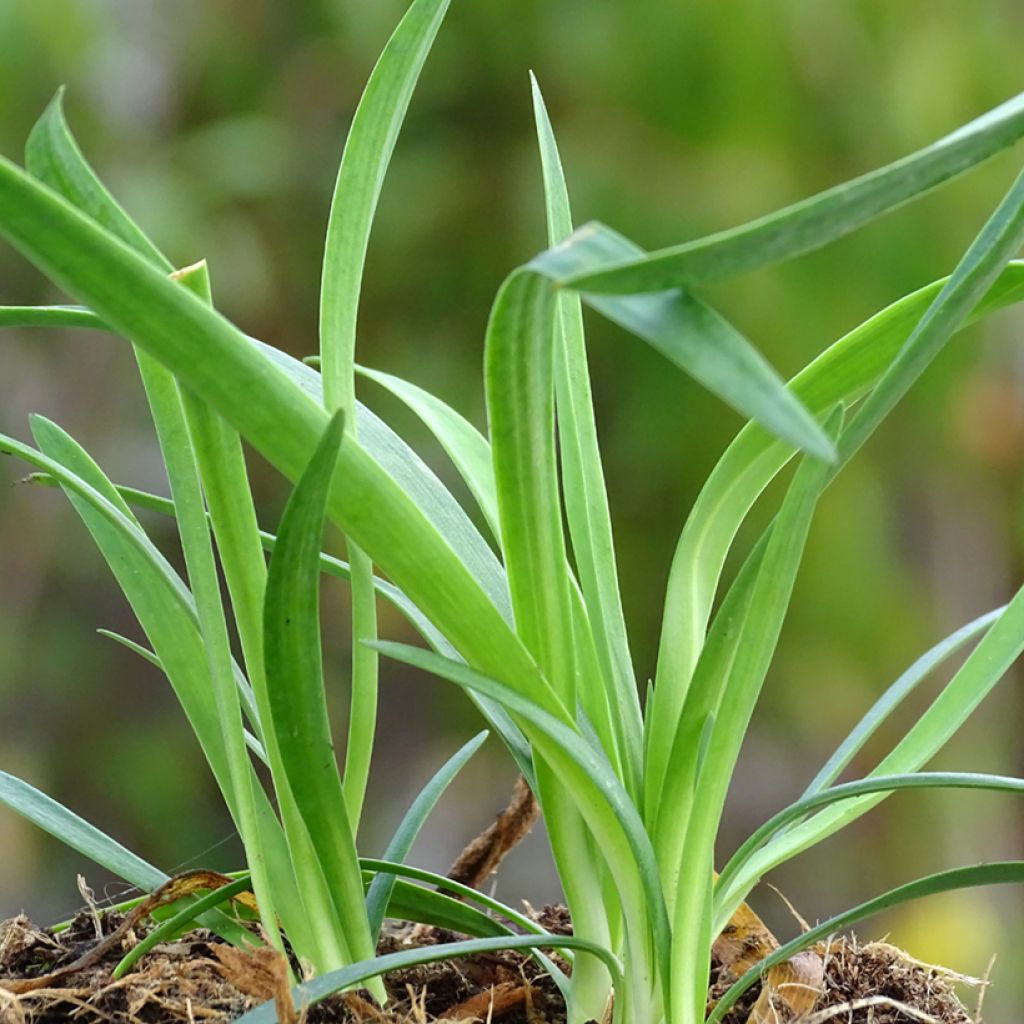

Agapanthe Thumbelina
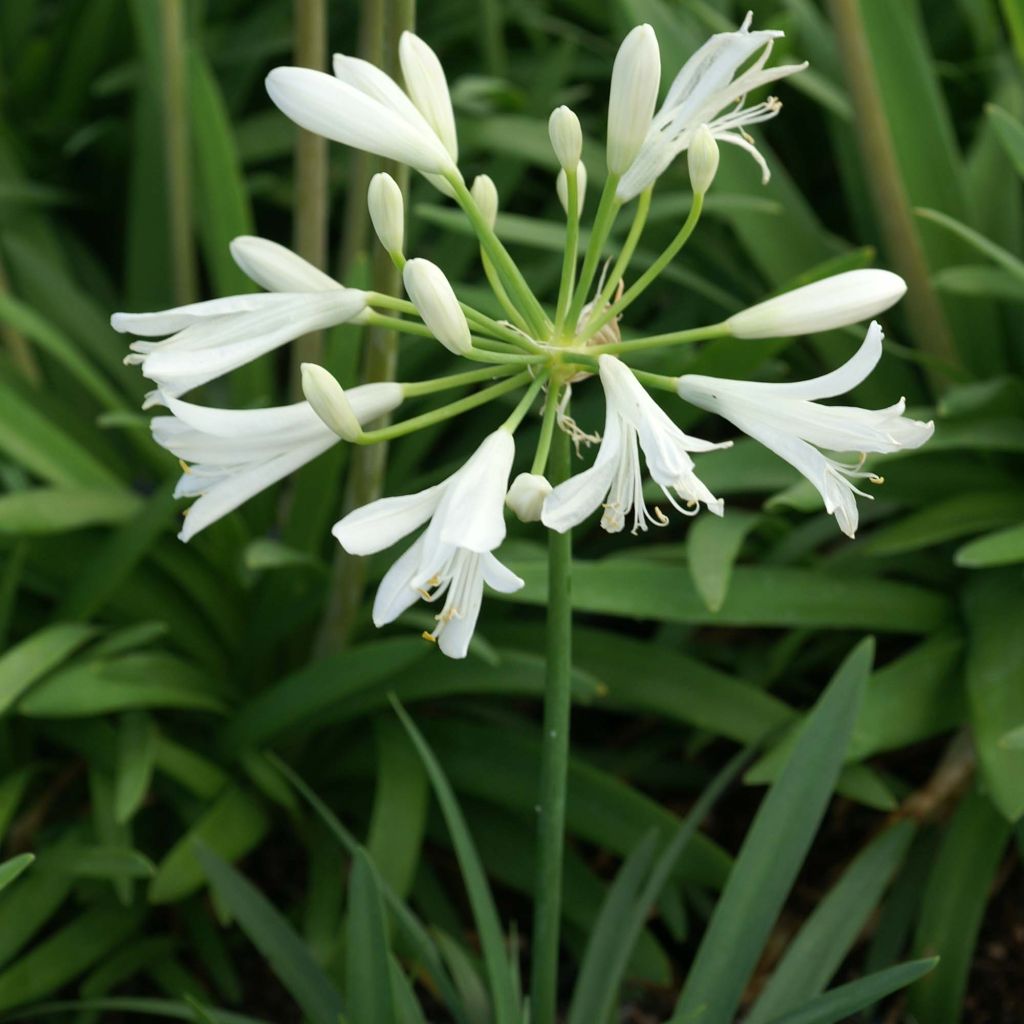

Agapanthe Thumbelina - Agapanthus
Agapanthus Thumbelina
Agapanthus Thumbelina
African Lily, Lily of the Nile
Special offer!
Receive a €20 voucher for any order over €90 (excluding delivery costs, credit notes, and plastic-free options)!
1- Add your favorite plants to your cart.
2- Once you have reached €90, confirm your order (you can even choose the delivery date!).
3- As soon as your order is shipped, you will receive an email containing your voucher code, valid for 3 months (90 days).
Your voucher is unique and can only be used once, for any order with a minimum value of €20, excluding delivery costs.
Can be combined with other current offers, non-divisible and non-refundable.
Home or relay delivery (depending on size and destination)
Schedule delivery date,
and select date in basket
This plant carries a 12 months recovery warranty
More information
We guarantee the quality of our plants for a full growing cycle, and will replace at our expense any plant that fails to recover under normal climatic and planting conditions.
Would this plant suit my garden?
Set up your Plantfit profile →
Description
Agapanthus 'Thumbelina' is a hybrid Agapanthus of small size, well-dense, particularly floriferous, offering numerous small umbels of pure white flowers of modest size. Its evergreen foliage, which makes it resemble a Liriope when not in bloom, covers the ground with the same density and elegance. When its flowers appear, usually in July-August, it metamorphoses into a white and airy bouquet, of the most beautiful effect in a border or a flowering pot. This recent variety, relatively hardy, can be planted in the ground, in a sheltered position and with good winter protection, in many regions.
Agapanthus plants belong to the Liliaceae family, native to South Africa, which hybridize naturally in nature or in our gardens. Agapanthus 'Thumbelina' is a recent hybrid cultivar distinguished by its reduced growth and floribundity. This plant develops and multiplies rapidly from a stump with fleshy rhizomes, forming a dense clump of narrow linear foliage, dark green and glossy, at least 40cm (16in) in diameter, expanding over time. The abundant flowering takes place in summer, more or less early depending on the climate, and lasts about 6 weeks. Solid and stout stems about 50cm (20in) high bear at their tips light hemispherical umbels, 8 to 10cm (3 to 4in) in diameter, composed of about twenty small campanulate pure white flowers, carried by long peduncles.
The 'Thumbelina' Agapanthus is a lovely variety to integrate in a white garden, among grey foliage, Gauras or daisies. It brings an exotic and light touch to sunny borders, while effectively covering the ground with its beautiful foliage throughout the year. This semi-hardy variety should be placed in a protected and south-facing location, and don't forget to apply a thick mulch at its base. Whether in a border, a rockery, a pot or a container, the 'Thumbelina' Agapanthus is suitable for a wide range of uses. It is particularly well-suited to mild coastal climates. In harsher regions, it will be perfect in a pot to be stored away each winter. It is very beautiful when associated with other mauve or blue varieties in a minimalist decor. It is also very decorative in exotic-themed borders with Kniphofias, Hemerocallis, shrubby salvias or Phlomis fruticosa.
Agapanthus Thumbelina in pictures
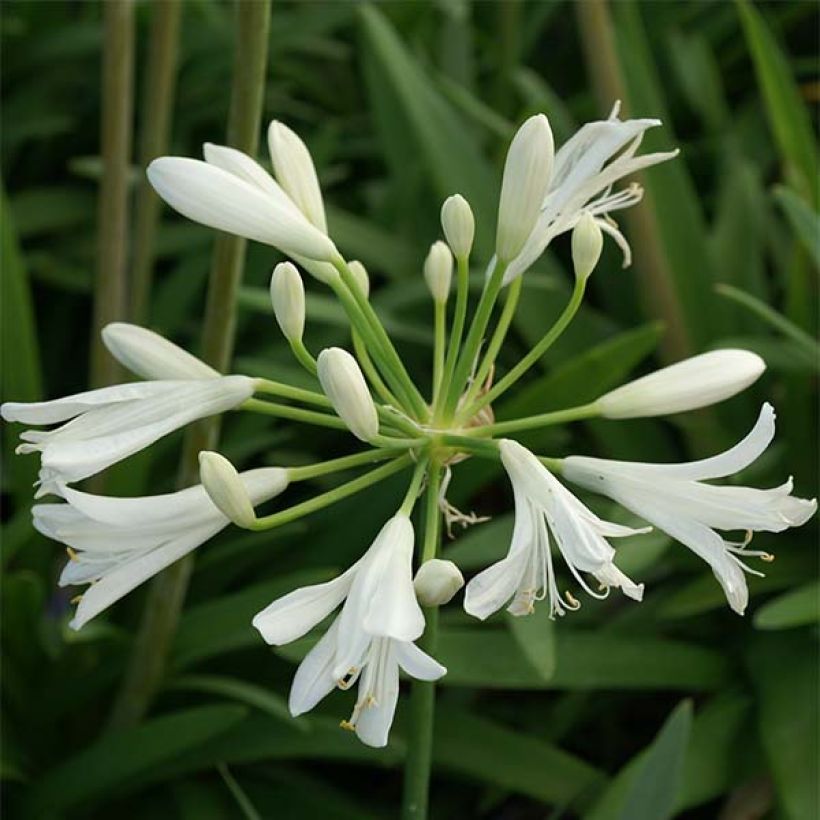

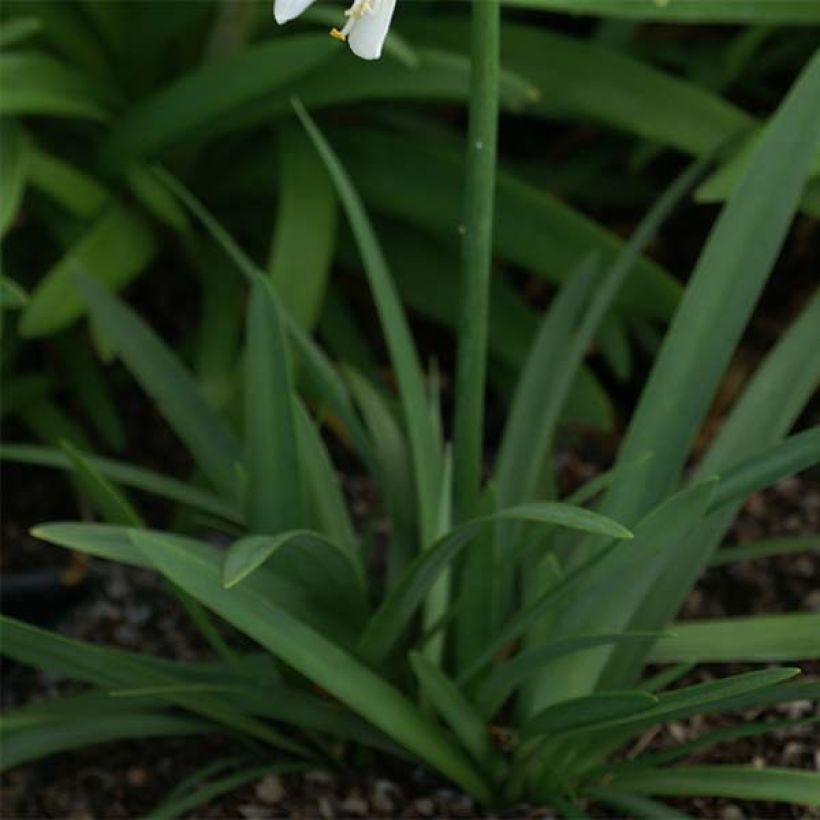

Flowering
Foliage
Plant habit
Botanical data
Agapanthus
Thumbelina
Alliaceae - Liliaceae
African Lily, Lily of the Nile
Cultivar or hybrid
Other Agapanthus - Lily of the Nile
View all →Planting and care
Plant Agapanthus 'Thumbelina' stumps by covering them with at least 10cm (4in) of good soil so that they are more resistant to cold. It is essential to plant them in spring and mulch them in winter. For pot cultivation, use 5 young plants for a 24cm (9in) pot and shelter your pots in winter. They prefer a rich and moist but well-drained soil, enriched with sand. Water them regularly during the growth period (twice a week). However, avoid watering them afterwards. They are sensitive to excess moisture in winter. This variety thrives particularly well in rockeries and containers. A well-drained sandy mixture, slightly acidic, should be used. This plant seems to prefer shallow containers and will flower abundantly if regularly fed with slow-release fertilizer.
Planting period
Intended location
Care
Planting & care advice
This item has not been reviewed yet - be the first to leave a review about it.
Similar products
Haven't found what you were looking for?
Hardiness is the lowest winter temperature a plant can endure without suffering serious damage or even dying. However, hardiness is affected by location (a sheltered area, such as a patio), protection (winter cover) and soil type (hardiness is improved by well-drained soil).

Photo Sharing Terms & Conditions
In order to encourage gardeners to interact and share their experiences, Promesse de fleurs offers various media enabling content to be uploaded onto its Site - in particular via the ‘Photo sharing’ module.
The User agrees to refrain from:
- Posting any content that is illegal, prejudicial, insulting, racist, inciteful to hatred, revisionist, contrary to public decency, that infringes on privacy or on the privacy rights of third parties, in particular the publicity rights of persons and goods, intellectual property rights, or the right to privacy.
- Submitting content on behalf of a third party;
- Impersonate the identity of a third party and/or publish any personal information about a third party;
In general, the User undertakes to refrain from any unethical behaviour.
All Content (in particular text, comments, files, images, photos, videos, creative works, etc.), which may be subject to property or intellectual property rights, image or other private rights, shall remain the property of the User, subject to the limited rights granted by the terms of the licence granted by Promesse de fleurs as stated below. Users are at liberty to publish or not to publish such Content on the Site, notably via the ‘Photo Sharing’ facility, and accept that this Content shall be made public and freely accessible, notably on the Internet.
Users further acknowledge, undertake to have ,and guarantee that they hold all necessary rights and permissions to publish such material on the Site, in particular with regard to the legislation in force pertaining to any privacy, property, intellectual property, image, or contractual rights, or rights of any other nature. By publishing such Content on the Site, Users acknowledge accepting full liability as publishers of the Content within the meaning of the law, and grant Promesse de fleurs, free of charge, an inclusive, worldwide licence for the said Content for the entire duration of its publication, including all reproduction, representation, up/downloading, displaying, performing, transmission, and storage rights.
Users also grant permission for their name to be linked to the Content and accept that this link may not always be made available.
By engaging in posting material, Users consent to their Content becoming automatically accessible on the Internet, in particular on other sites and/or blogs and/or web pages of the Promesse de fleurs site, including in particular social pages and the Promesse de fleurs catalogue.
Users may secure the removal of entrusted content free of charge by issuing a simple request via our contact form.
The flowering period indicated on our website applies to countries and regions located in USDA zone 8 (France, the United Kingdom, Ireland, the Netherlands, etc.)
It will vary according to where you live:
- In zones 9 to 10 (Italy, Spain, Greece, etc.), flowering will occur about 2 to 4 weeks earlier.
- In zones 6 to 7 (Germany, Poland, Slovenia, and lower mountainous regions), flowering will be delayed by 2 to 3 weeks.
- In zone 5 (Central Europe, Scandinavia), blooming will be delayed by 3 to 5 weeks.
In temperate climates, pruning of spring-flowering shrubs (forsythia, spireas, etc.) should be done just after flowering.
Pruning of summer-flowering shrubs (Indian Lilac, Perovskia, etc.) can be done in winter or spring.
In cold regions as well as with frost-sensitive plants, avoid pruning too early when severe frosts may still occur.
The planting period indicated on our website applies to countries and regions located in USDA zone 8 (France, United Kingdom, Ireland, Netherlands).
It will vary according to where you live:
- In Mediterranean zones (Marseille, Madrid, Milan, etc.), autumn and winter are the best planting periods.
- In continental zones (Strasbourg, Munich, Vienna, etc.), delay planting by 2 to 3 weeks in spring and bring it forward by 2 to 4 weeks in autumn.
- In mountainous regions (the Alps, Pyrenees, Carpathians, etc.), it is best to plant in late spring (May-June) or late summer (August-September).
The harvesting period indicated on our website applies to countries and regions in USDA zone 8 (France, England, Ireland, the Netherlands).
In colder areas (Scandinavia, Poland, Austria...) fruit and vegetable harvests are likely to be delayed by 3-4 weeks.
In warmer areas (Italy, Spain, Greece, etc.), harvesting will probably take place earlier, depending on weather conditions.
The sowing periods indicated on our website apply to countries and regions within USDA Zone 8 (France, UK, Ireland, Netherlands).
In colder areas (Scandinavia, Poland, Austria...), delay any outdoor sowing by 3-4 weeks, or sow under glass.
In warmer climes (Italy, Spain, Greece, etc.), bring outdoor sowing forward by a few weeks.
































